13 Powerful Solo Hiking Tips For Women For A Safe & Enjoyable Trek
By Jessie Festa. This guide to hiking alone as a woman contains affiliate links to trusted partners!
Looking for solo hiking tips?
Then you’re in the right place!
For many women (and men), the thought of hiking alone can be terrifying.
In fact, many of us have probably been in the position where we have a trail we really want to do, but have nobody to go with, so we simply choose to stay home instead.
I know I’ve been there.
But, after embarking on a number of solo female hiking trips around the world, I’ve become much more confident. Not only that, but I’ve picked up a number of helpful tips for solo hiking — which I’ll be sharing with you below.
My goal: to help you safely and confidently hit the trails, even when you’re sans partner.
Pro tip: Before going hiking, make sure to download the AllTrails app to have trail guides, maps, photos, and reviews right at your finger tips. You can also sign up for a free trial of AllTrails+ to download offline maps, get alerts for wrong turns, find trails by distance from you, and more!
What Type Of Hiker Are You? [Personality Quiz]
Now before we dive into our list of hiking alone tips, I want to share a free personality quiz I think you’ll love!
Discover your hiking persona in this fun and short hiker personality quiz, which also shares trail suggestions based on your results.
Once you’ve grabbed the quiz, keep reading for an in-depth solo female travel guide for hikers.
The Benefits Of Hiking Alone
Let’s kick off this article on hiking by yourself by going over why you might actually want to embark on a solo hiking trip.
If you’ve ever wondered “Is it weird to hike alone?” the answer is not at all! In fact, ask any avid hiker and they’ll tell you they regularly see people hiking alone, as it has many advantages.
First of all, it allows us to get back in touch with our true selves.
Humans are animals with a connection to the natural world; however, due to incessant emails, Instagram notifications, and the typical hustle of daily modern life, we have lost many of our natural instincts.
But, spending time in nature — particularly alone when we can really take it all in and notice our surroundings — can help re-connect us, which is an incredible feeling.
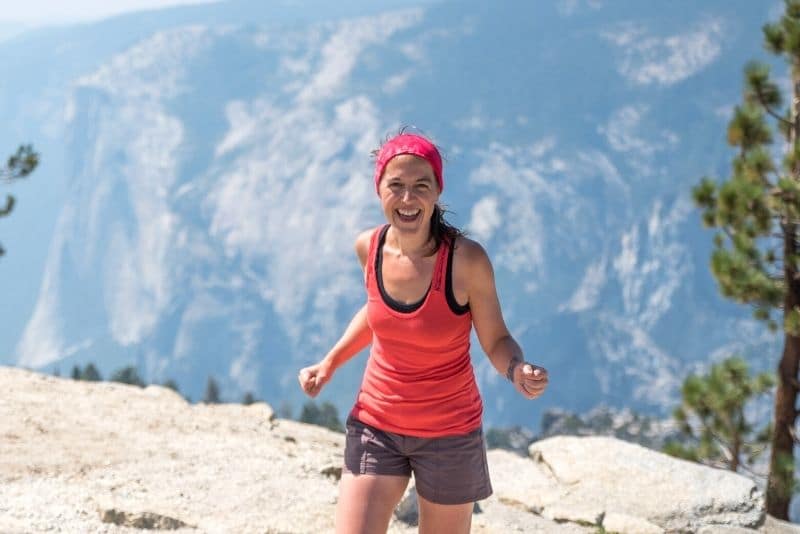
It’s also the perfect time to do a little soul searching and intently listen to our thoughts without distraction.
If you’ve been having trouble making a decision or something has been weighing on you, a little alone time in nature can help bring clarity as you remove distractions.
Which brings me to the next solo hiking benefit: it’s easier to let go.
Let go of the stress. The notifications. The hustle. The to-do lists. The obligations.
Then take a deep breath, inhale the sweet pine and fragrant wildflowers, and hike on.
By the end of the trail, you’ll already be reaping personal benefits as you become a more strong, independent, and confident person — which are actually all general benefits of solo travel, too!
Finally, you can enjoy total control over how you spend your time. If you want to explore the many amazing hiking trails this world has to offer, you can do so when and where it’s convenient for you.
Solo Hiking Tips For Women
Okay, so now that we’ve gone over a few solo hiking benefits, let’s dive into some important pieces of advice when it comes to solo hiking for women.
In my personal opinion, solo hiking is often about striking a balance between having an adventure and feeling comfortable with your trail choice.
As with most things in life, there are risks involved; however, when it comes to how to hike alone, having some proven strategies under your belt can help instill confidence while allowing for a safer experience.
In fact, if you’ve ever asked “Is it safe to hike alone?” the following tips will help you see that it truly can be, as long as you plan and prepare.
1. Be honest about your own hiking abilities
It may be tempting to set off on a crazy high altitude hike or a technical trek offering a stunning view, but by choosing treks that are beyond your ability level, you put yourself in danger — especially when hiking solo.
Now, if it’s a fitness issue, you can work your way up to steeper and more physically demanding trails with practice.
However, when it comes to technical trails that involve things like rock climbing and river crossings, you may want to leave these for when you have someone to go with.
Keep in mind, a hiking trail doesn’t need to be advanced for it to be too technical. It all comes back to your own ability level and comfort. There is absolutely no shame in deciding to forgo a trail until you have someone to hike with.
For instance, I know plenty of women who have successfully completed hiking the Appalachian Trail alone — which is the longest hiking-only footpath in the world at 2,190 miles; however, these ladies were very experienced hikers who felt confident embarking on this active adventure.
2. Consider a popular hiking trail
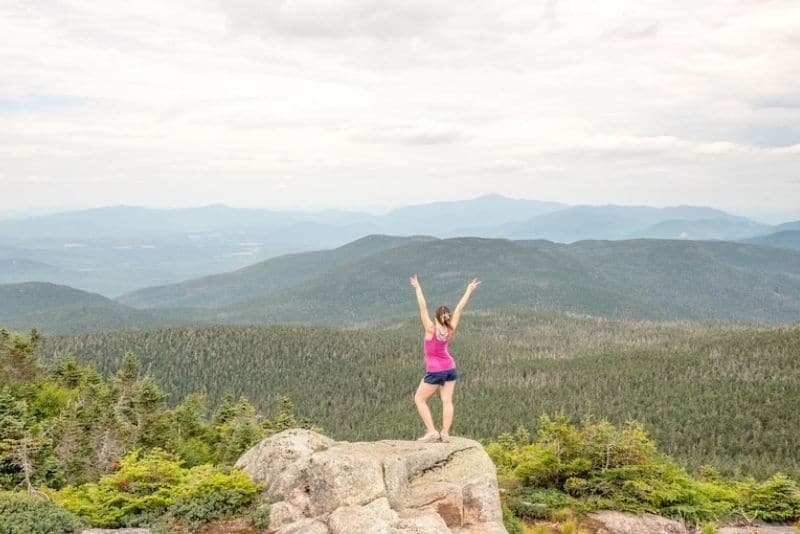
When it comes to gaining confidence as a solo hiker, this is one of the best hiking tips on the list.
Many of the fears people have about hiking solo and the threats they may encounter are completely wiped away on a trail with high-to-moderate foot traffic.
Nervous about wildlife encounters? Popular trails are noisier, which tends to scare away bears and other large animals.
Worried you’ll have an injury and won’t be able to get help? On popular trails, other hikers will come to your aid relatively quickly.
Scared you’ll get lost? You’ll be able to follow the crowd on more popular trails.
Quite honestly, some of my favorite hikes have been on more populated trails. In fact, hiking Mount Marcy — which takes you up New York’s highest mountain — offers true 360-degree views of the Adirondack Mountains. As it’s one of the best hikes in Upstate New York, it’s also well-trafficked.
3. Stay on designated trails
Adding on to the last solo hiking tip, it’s important to stay on marked trails for a few reasons.
In terms of solo hiking safety, sticking to designated trails makes it less likely you’ll get lost.
Moreover, it’s important for conservation reasons, as going off-trail can damage local eco-system and hurt or kill plant and animal species. Staying on the trail is a vital part of being a more responsible hiker.
4. Know the potential threats before hiking solo
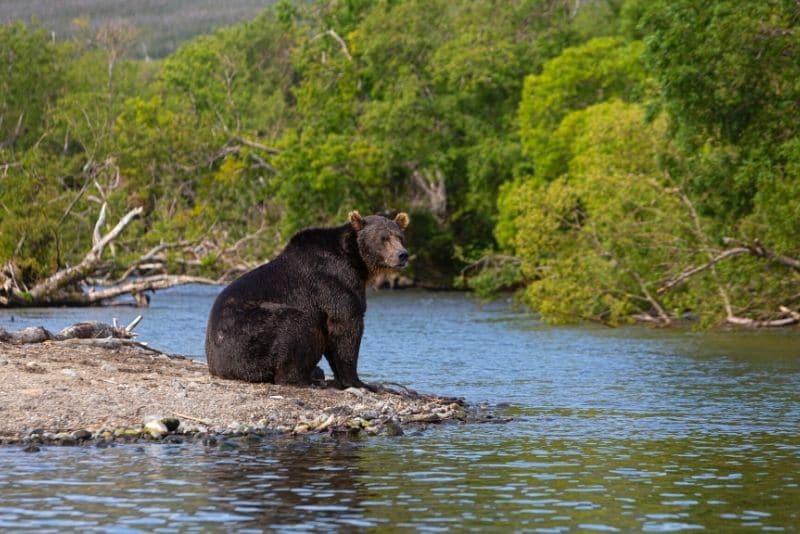
Just as not all trails award the same views, they also don’t all have the same potential threats. A few things to consider:
- What animals might you encounter?
- What are the trail conditions at the time you’ll be hiking?
- Are there any technical sections?
- Are trails well-marked or is there a high potential of getting lost?
- Is the trail prone to rapid weather changes?
- Have there been reports of crime or shady people on the trail? (I hate to mention this, but it is sadly something to be mindful of and I would personally avoid these trails completely)
Once you know the answers, you’ll want to do some research on how to best prepare.
For instance, if there are bears along the trail, consider packing bear spray and having a strategy to make noise along the way. Many solo hikers will actually wear bells to do this.
While typically these questions simply lead to additional preparation, also be prepared to nix a trail if it will truly be unsafe to hike solo.
For example, if a trail is very technical or has lots of steep falls and uneven terrain it may be best to wait until you have a hiking buddy.
5. Let loved ones know where you’ll be solo hiking
Whether you’re hiking solo, traveling solo, or really doing anything on your own, it’s a smart idea to let loved ones know your plan. It’s also one of the most crucial safe hiking tips you can implement.
While this may sometimes feel like a slice of your independence gets taken away when you’re constantly needing to check in, it can be a lifesaver if something goes wrong.
Keep in mind, too, that you can set boundaries with your check-ins.
I know my family would love if I texted every hour when I’m traveling solo, but realistically that is not possible. I do, however, send a text once per day letting them know my plans and then again once I return back to my hotel. Additionally, I let my them know if I’ll be off the grid without service.
6. Bring a hiking map
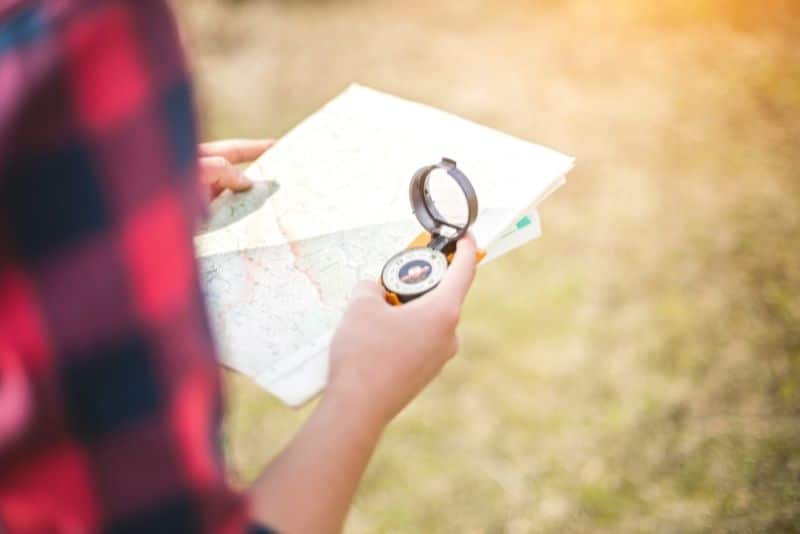
Just because a trail has a designated name or seems like it will be well-marked doesn’t necessarily mean it’s impossible to get lost.
I also find that when I’m alone and need to navigate a trail 100% myself, I tend to second-guess my intuition.
Yes, your intuition can be a great guide, but when hiking — and especially when hiking alone — a map is a safer bet.
It’s nice to have a paper map in case your phone dies, though I do still always like to pre-plot my trail on a Google Map.
Another handy tool is the AllTrails App. The app has a number of features for helping you to safely plan your next hike. Especially when hiking solo, it’s recommended to opt for the paid version, AllTrails+, for access to offline trail maps as well as alerts when you’ve missed a turn.
7. Download hiking safety apps
Speaking of apps, there are a number of personal safety apps worth downloading before your next solo hiking trip.
One of my favorites is the Cairn App, which automatically helps you implement a number of the safety tips for hiking alone listed in this guide — and more. A few of the app’s features include:
- Downloadable offline hiking maps
- Calculating your estimated time of arrival based on your speed, trail distance, and elevation change
- Automatically alerting loved ones when you’re not back from a hike in time while also sharing your intended destination and return time
- The ability to share real-time location tracking with loved ones
- Crowdsourced cell-service tracking (so you know where there is coverage on a specific trail)
Another great solo hiking safety app is the Emergency App from the Red Cross, which shares emergency alerts and preparation advice for 35 different severe weather and emergency situations.
8. Pack solo safety hiking essentials

Along with apps, there are a number of solo hiking essentials to pack for hiking alone safety. A few of these include:
Personal safety alarm. Like this one. When it comes to these pocket-sized alarms, you’ll simply pull a cord or press a button to have it blare louder than a fire truck. This can scare off potential attackers and wild animals, and is one of my personal favorite travel safety essentials in general.
Personal locator beacon (PLB) or satellite messenger. Like the popular Garmin inReach Mini. Having one of these is key if you’ll be solo hiking in a remote area, as both of these tools can help you send SOS messages when in danger. Just make sure to check the coverage map for the device(s) you’re considering to make sure your specific trail is covered. You can check this guide for additional help with choosing a PLB or satellite messenger.
Flash light or headlamp. Like these. Even if you plan to be back before dark, it’s best to be prepared in case you find yourself on the trail after sunset. Note that using your iPhone flashlight is not wise as it’s not rugged and the battery can easily die. Having a powerful backup light source is vital in this situation.
Keep in mind, if you’ll be hiking alone for multiple days or heading out on a remote trail, you’ll want even more solo hiking gear. For instance, packing an SOL Emergency Bivy is one of smartest hiking tricks and tips for overnight treks. This life-saving hiking accessory packs down small and can act as an emergency blanket or sleeping bag. It’s waterproof and windproof, and its bright orange color makes it easy to spot — even in bad weather.
9. Plan for health while hiking alone
Of course, when it comes to solo hiking gear you’ll also want to consider how to stay healthy. This involves packing a first aid kit, sunscreen, any necessary medications, and plenty of food and water.
The importance of hydration cannot be stressed enough. Not only can dehydration lead to life-threatening consequences, but it can make it impossible to continue on once your body has reached the point of no return.
The thing is, it’s not enough to simply drink when you feel thirsty. Instead, here is a general plan of action:
- Pack about one half-liter of water per hour (for easy-to-moderate hikes in moderate temperatures)
- Take small sips about every 20 minutes
If you’ll be going on a long-distance hike with natural water sources along the way, consider a reusable water bottle with built-in filtration system (like these).
Keep in mind that trail distance, hike distance, and weather conditions all factor into how much water you should be drinking. Check out this guide for more in-depth tips for staying hydrated on a solo hike.
10. Know what to wear when solo hiking
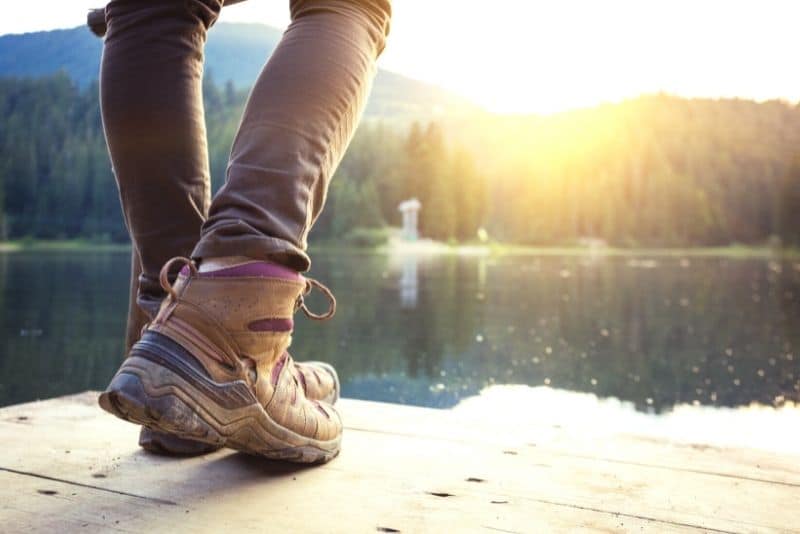
Staying safe also means staying dry and temperate, so wearing the proper hiking attire is essential.
Of course, if you’re hiking on a short flat and paved trail, your clothing choices will require less thinking; however, if you’re embarking on a moderate or advanced trail, a few important pieces of hiking clothing include:
Comfortable yet sturdy hiking shoes. While the exact shoes you should wear for your solo hike will depend on the trail terrain, there should be treading on the bottom to keep you from slipping. Also, consider if it makes sense to opt for something with solid ankle support, like a mid- or high-cut boot.
Layers. While the exact layers will, again, depend on the trail you choose, at the very least you’ll want two layers — more if you’ll be encountering cold conditions.
Important: your base layers and socks should always be moisture-wicking to help keep you dry and temperate — and to ward off hypothermia! This is true in all weather conditions.
Keep in mind, too, that even if it’s warm at the start of your hike, summits can be much chillier. Moreover, having a lightweight over-shirt with built-in sun protection can keep you from getting sunburned.
Sun-protecting accessories. Sunglasses and hats — particularly those that also cover the nape of your neck — are important trail essentials.
Here is an in-depth guide on what to wear when you go hiking.
11. Keep track of time and check progress frequently
For the safest solo hiking experience, you’ll want to stick with daylight hours. The thing is, while enjoying the beauty of nature it’s easy to lose track of time and find yourself racing back to the trailhead trying to beat the setting sun.
This has happened to me on more than one occasion and, trust me, it’s scary.
One time, it was getting dark and I didn’t realize I’d actually veered off my intended trail, which also added the challenge of needing to re-route myself in record time. Luckily, my intuition led me back toward the correct path, but I would not recommend letting this alone be your guide.
Reminder that maps are your friend whether hiking alone or in a group.
To help ensure you never end up in this sticky situation, it’s wise to research how long your trail is and allot more than enough time to hike it in the daylight. Additionally, set a turnaround time that you’ll stick to regardless of how close to the end you are.
Again, allow yourself extra time. Inevitably, you’ll stop to enjoy a view, have a snack, or snap some photos. Or you might get turned around and will need time-padding to reroute yourself.
12. Take photos as you hike

This is one of those hiking safe tips that has saved my butt many times!
If you’ve read the story of Hansel and Gretel, you may remember they leave a trail of breadcrumbs to guide them back out of the forest. Well, taking photos acts as these breadcrumbs, as you’ll be able to refer to your snapshots if you get lost to help you find your way back.
This piece of advice is especially important at turns and forks in the trail.
For instance, when hiking the Big Trees Trail to the Lost Horse Mine Trail in Joshua Tree, part of the trail was washed out. I continued on anyway and, not surprisingly, I got lost — though luckily I’d been taking photos along the way.
In photos taken before I got turned around, I noticed a discarded pot on the side of the trail, so when I found this pot again I knew I was back where I had been before.
13. Do a walking meditation to maximize solo hiking benefits
Of course, having your camera out the entire time defeats the purpose of this tip, so I recommend doing your walking meditation during a section of the trail that is straight and well-marked so you can put away your camera.
As stated above, one of the biggest benefits of hiking solo is getting back in touch with nature and yourself, and a walking meditation — which combines the physical experience of walking with the focused mindfulness of meditation — is a great way to do this.
According to Jon Kabat-Zinn, a world-renowned meditation teacher and the founder of Mindfulness-Based Stress Reduction, there are a number of key benefits to doing a walking meditation, including:
- Improves awareness
- Improves sleep quality
- Offers mental clarity
- Facilitates mind-body connection
Okay, so how do you reap all of these incredible benefits while on your solo hike?
Start by walking slowly with rhythmic steps and breathing. While walking, take notice of everything going on in and around you. What do you see? What visual and sensory details do you notice? How do you feel?
As with all meditations, try to stay in the moment. If your mind wanders, bring it back to the present, immersing yourself in the scents, sounds, sights, and sensations right there on the trail.
This may take some practice, but it’s a wonderful way to maximize the benefits of hiking solo.
Solo Hiking Trips & Groups

Now, after reading these solo hiking tips and tricks, you may still be thinking that going completely alone isn’t for you; which is totally fine, as again, the most important thing here is for you to feel comfortable and safe.
If this is the case for you, I’d recommend linking up with a local hiking group or booking a trip through companies and platforms like:
- Meetup.com – Join local hiking groups and attend hiking meetups. Don’t see one you’re interested in? Start one yourself!
- CouchSurfing – I’ve met up with many CouchSurfers while traveling to go hiking.
- REI – They offer guided day hikes and multi-day guides around North America.
- Facebook Groups – Join a local hiking group to connect with others looking to hit the trails.
- Hire a hiking guide – You can use a platform like ToursByLocals or WithLocals to hire a local guide to hike with you.
- Solo hiking vacations – There are tour operators like WHOA Travel and Wildland Trekking that offer small-group hiking trips where you can join on as a solo traveler.
What is great about these types of outings is you can choose to be social or keep to yourself for more of a solo hiking trip (that still includes the safety net of a group).
Solo Hiking Quotes
Before ending this guide, I’d like to share a few of my favorite quotes to help inspire your next solo hiking trip:
“It’s not the mountain we conquer, but ourselves.” – Sir Edmund Hillary
“Of all the paths you take in life, make sure a few of them are dirt.” – John Muir
“Traveling alone was like laundry for my thoughts.” – Mark Foster
“Hiking is not escapism; it’s realism. The people who choose to spend time outdoors are not running away from anything; we are returning to where we belong.” – Jennifer Pharr Davis
“It had nothing to do with gear or footwear or the backpacking fads or philosophies of any particular era or even with getting from point A to point B. It had to do with how it felt to be in the wild. With what it was like to walk for miles with no reason other than to witness the accumulation of trees and meadows, mountains and deserts, streams and rocks, rivers and grasses, sunrises and sunsets. The experience was powerful and fundamental. It seemed to me that it had always felt like this to be a human in the wild, and as long as the wild existed it would always feel this way.” – Cheryl Strayed
And of course, if you’re looking for an inspiring book by a solo female hiker, Cheryl Strayed’s Wild: From Lost to Found on the Pacific Crest Trail is a must-read!
Final Notes On Solo Female Hiking
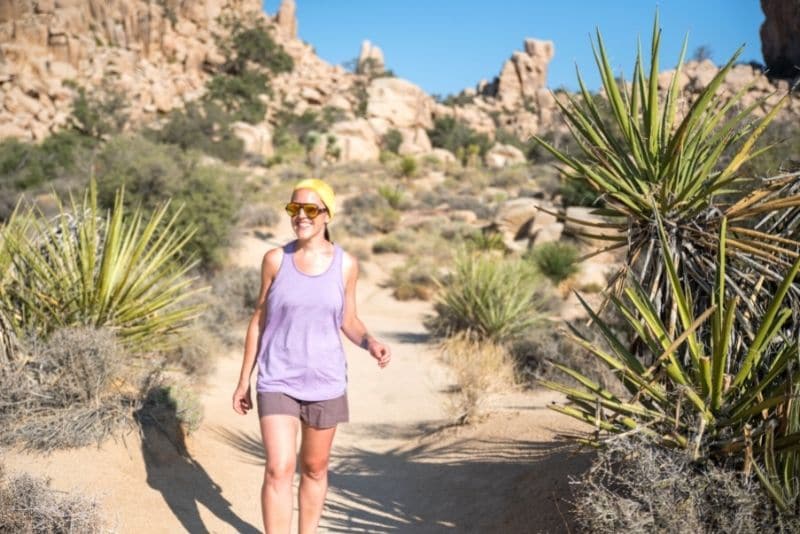
There are many pros and cons of solo travel — and of solo hiking.
Hiking alone can be an empowering experience that really opens up the world for you. It can help you reconnect with nature, grow your self-confidence, and conquer your hiking bucket list as you no longer need to wait for a partner.
That being said, it isn’t for everyone.
If you find that even after implementing the above tips you still feel uncomfortable hiking solo, consider joining a local Meetup group for hikers or booking a hiking trip instead. These experiences can really offer the best of both worlds, and also mean you never have to miss out on a trail you want to experience!
What solo hiking tips would you add to this list?
Enjoyed these solo safety hiking tips? Pin the guide for later!

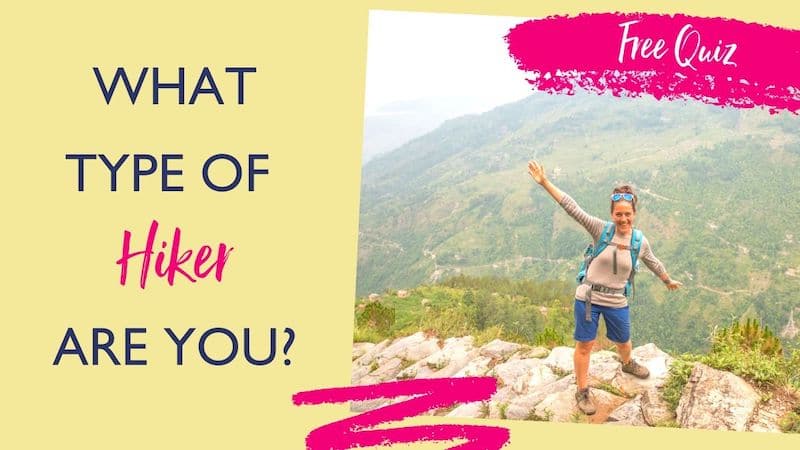
Hi, I’m Jessie on a journey!
I'm a conscious solo traveler on a mission to take you beyond the guidebook to inspire you to live your best life through travel. Come join me!
Want to live your best life through travel?
Subscribe for FREE access to my library of fun blogging worksheets and learn how to get paid to travel more!
Turn Your Travel Blog Into A Profitable Business
Subscribe to my email list to snag instant access to my library of workbooks, checklists, tutorials and other resources to help you earn more money -- and have more fun -- blogging. Oh, and it's totally FREE! :) // Privacy Policy.